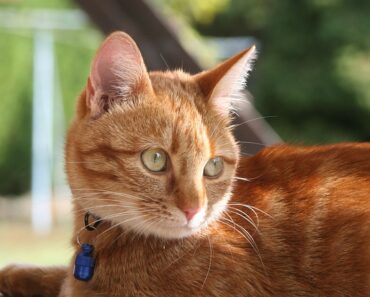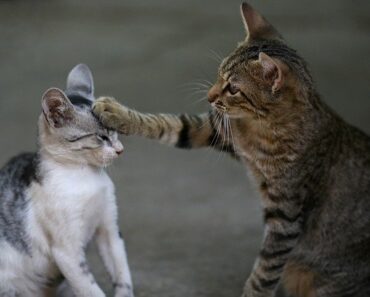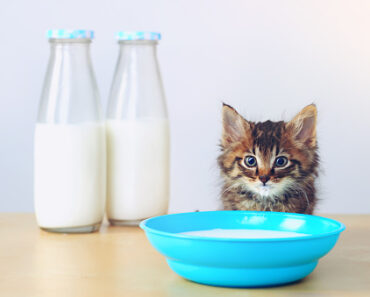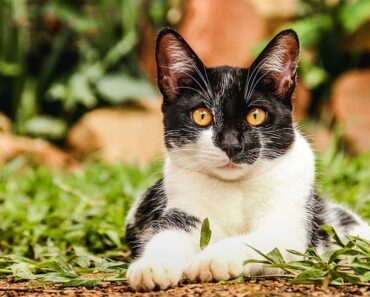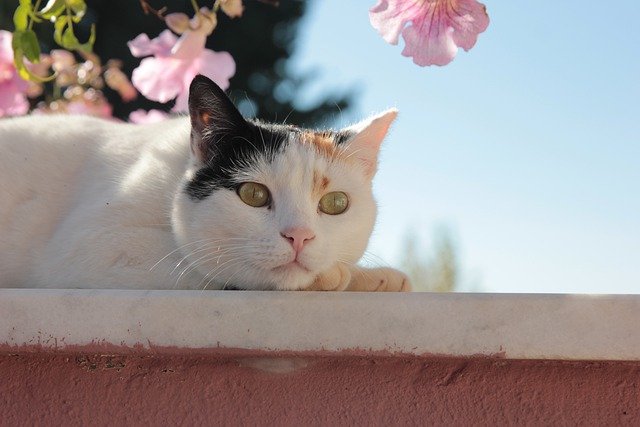
All these differences are normal. However, in some cases, behavioural problems related to great anxiety or aggression are present and can have serious consequences for people living with these cats.
Developmental disorders in cats
Behavioural disorders in cats are different from those in dogs. This is mainly due to the developmental period. The dog finishes its development in 8 to 12 weeks minimum.
In cats, the period is much shorter and is about 6 weeks. This is due to a need for complete autonomy earlier, as the cat has a more solitary lifestyle.
For the cat, there is a need for self-soothing which is mostly through territorial behaviors: each part of the cat’s territory has a well-defined role (resting place, place to eat, place for needs…). Contrary to the dog, appeasement does not go through hierarchy. Moreover, autonomy is acquired before adulthood at around 6 weeks of age.
Developmental disorders are often found in cats raised on bottle-feeding. Even though adopting this type of cat can be tempting, it is best to avoid it.
Hypersensitivity/hyperactivity (HSHA)
It is a disorder that also exists in dogs. This disorder is characterized by many symptoms:
- Lack of control in play: play is very violent and there is a lack of control over biting and scratching. The behavior is so aggressive that it causes other kittens of the same age to run away, or even adults if it is a cat living in a community.
- The inability to stay alone: this is a rather discreet symptom where the cat sticks to its master (often only one person). Finally, we can observe a frequent need for sucking (reminiscent of suckling).
- Satiety disorders: this is often the most spectacular symptom because the cat seems unable to satisfy himself. There can be obsessive behaviors during which owners are harassed when they eat, the cat attacks closet doors, the fridge….This excess food leads to poor digestion which can itself be the cause of diarrhea.
- Sleep disorders: there is an overall sleep deficit, often very significant. In general, these HSHA cats sleep less than 12 hours a day while a normal cat sleeps at least 18 hours a day. This is visible because when they are alone, these cats do not sleep and a lot of nonsense is done when the owners are away. Often, HSHA cats even wake up the owner at night and this is not normal (the cat must also sleep at night).
- Possible presence of multiple phobias. This is hard to interpret depending on the character of the cat. When a cat leaves because people are coming to the house, this can be a normal behavior depending on the temperament of the cat (more or less sociable cat).
Treatment: It is possible to cure these behavioral disorders all the more if they have been taken into account early on. It is often necessary to give veterinary drugs (anti-depressant type) to help the cat to resume normal behaviour but this can take a long time.
To complement the drug therapy, HSHA cats can also be replaced with an adult cat if the adult cat has enough character to put the kitten back in place. One can also reproduce the weaning and its aggressions: very severe, grabbing the animal by the skin of the neck or slapping it like the mother: ” slapping therapy ” ! However, this is not easy to advise to owners who have difficulties to implement this kind of therapy.
The Deprivation Syndrome
It depends on the living environment: a poor development environment will be unsuitable for the animal’s development environment and can therefore cause this kind of syndrome.
For example, this can be the case of a cat raised in an apartment with little exposure to the outside world and who will subsequently live in a large house with access to the outside world. This can induce phobias, anxiety and depression.
Phobias manifest themselves through emotional reactions (running away, avoidance, even aggression). Contact intolerance is also common. It is called “bite biting cat”: the cat is stroked until it reaches its tolerance level and bites without really warning.
Anxiety can manifest itself through diarrhea or chronic uncleanliness. We can also have a bulimic cat, a cat that licks himself excessively and presents depilation and skin problems.
Treatment : Here too it is difficult and there is a need for the cat to be taken care of early. Antidepressant medication is also recommended. Complementary treatments based on pheromone can soothe and reassure the cat and thus lower its anxiety threshold.
It is therefore necessary to choose a kitten adapted to its future living conditions. Care must be taken to avoid confinement.
It is good to know that the deprivation syndrome always occurs when the cat is raised in a poor environment and will live in a “rich” environment. The opposite does not normally lead to a disorder.
Behavioural disorders in older cats
In the old cat, when changing behavior, one must first think of physiological disorders: the behavior problem is often an early call of chronic diseases (kidney failure, heart disease …). These disorders can be very disabling for the cat/owner relationship. For example, it can result in sudden bulimia or behavioral changes.
On the other hand, behavioral changes should not be confused with signs of aging. Normal aging of the cat will result in a psychomotor slowdown (increase in sleep phase, decrease in activity, less precision in movements…).
Signs of behavioural disorders include increased vocalization, uncleanliness, bulimia, sleep disturbances and aggressive behaviour.
The most frequent behavioural disorders are :
- Depression characterized by insomnia, nagging meows, constant contact seeking, uncleanliness, bulimia, etc.
- Dysthymia or chronic mood disorder: it is an alternation between a normal cat and a cat that seems crazy with sudden changes in behavior, aggression, bulimia …
- Confusional Syndrome (equivalent to Alzheimer’s disease): this is a spatial and temporal disorganization of the cat (for example, the cat can no longer find its way home). Dirtiness, loss of learning are also possible symptoms.
Treatment: It is very difficult for older cats. Anti-depressant molecules are less effective.
It is important to keep in mind that the first causes of behaviour change in older cats are organic diseases and that it is preferable to consult a veterinarian before thinking that cats have real behavioural problems.
In all cases, whether it is a cat in development or an older cat, do not hesitate to consult a veterinarian specialized in behaviour in order to establish an effective treatment if necessary.

